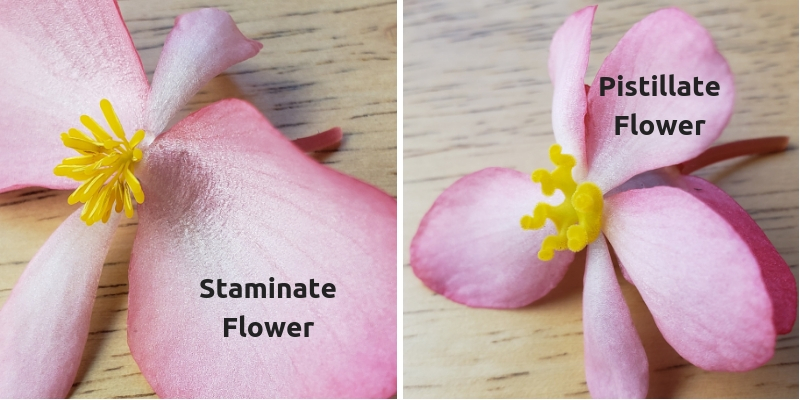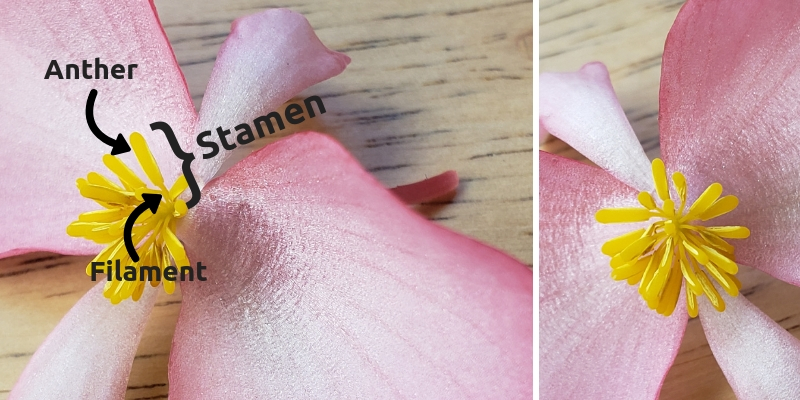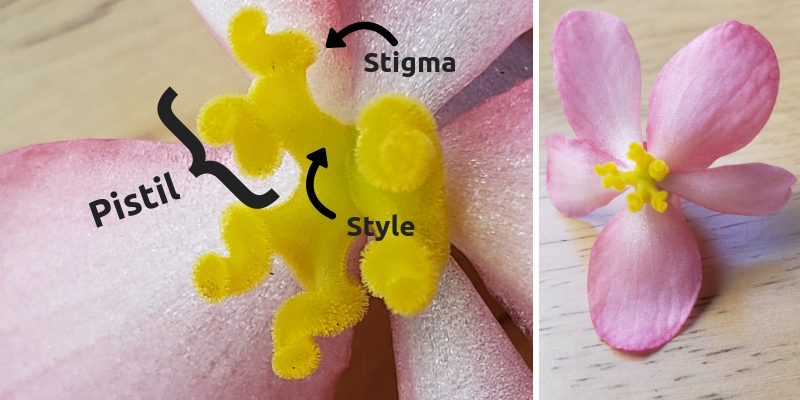A few months back, I was watering and rearranging some plants, when I accidentally knocked off a few begonia flowers. The flowers were beautiful, and I couldn’t stand to sweep them off the deck. Instead, I brought them into the kitchen to put them in a small vase.
That’s when I noticed it.
The flowers didn’t all look exactly the same.

How many times have I seen a begonia in my lifetime? The answer is: too many times to remember. I see them every time I walk the aisles in spring at my local garden center. I own three types of begonia plants that I keep indoors over winter.
As it turns out, begonia plants are monoecious, which means the male (staminate) and female (pistillate) flower are separate from one another and appear on the same plant.
Tamawi’s Tidbit: When the male and female flowers are found on different plants, it’s called dioecious. A common example of a dioecious plant is the Blue Holly. Each holly bush is either male or female. A male holly needs to be planted nearby a female holly, or else the female holly bush will never produce red berries.
The male staminate flowers have a cluster of stamens. Look very close and you’ll see the stamen has an anther on the end that’s held up by a filament. The anther is the part of the plant that produces pollen.

Pistillate flowers have three stigmas with two lobes each. The stigmas have tiny hairs that catch and hold pollen grains. Each stigma is held by a style.

Tamawi’s Two Cents: Plant terminology might seem confusing, but it’s a good idea to learn new words so that other scientists know what you’re talking about. If you told your doctor that your leg hurt, then they’d probably ask you, “Which part of your leg? Is it your shin, knee or thigh?” This holds true when you’re talking about the parts of a plant, too.
The begonia’s monoecious flowers are something I never knew about for decades, even though it was right in front of my eyes plenty of times. Are there things in your life that you look at regularly, but might not have noticed a finer detail? For example:
- How many whiskers does your cat have?
- What is the pattern on maple tree bark? Try making your own bark rubbing.
- Does a dandelion or clover have anything hidden in the center of the flower?
Take some time to look again, closely and with purpose, at something outside. Then let us know what you discover with your superpower of observation in the comments below.
Challenge your observation skills further with Before Cameras Existed and How to Reveal a Plant’s Vascular System.

